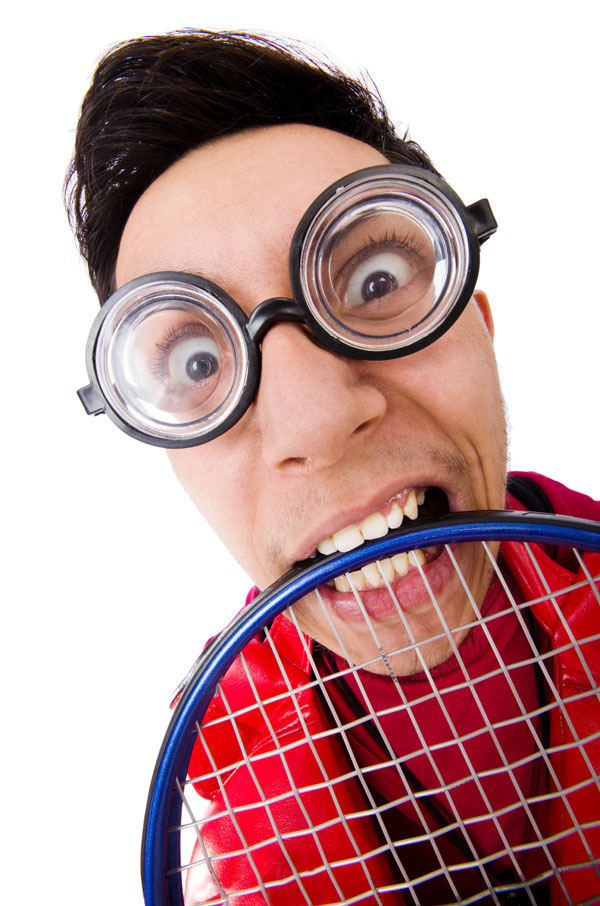Rules & Etiquette
Oh Do Behave!
Tennis Australia Rules For Matches
Played Without A Chair Umpire
All players should be aware of the following basic principles when playing a match without a Chair Umpire:-
- Each player is responsible for all calls on his/her side of the net, however it should be noted that a Courts Supervisor or Referee is permitted to reverse an incorrect line call.
- If in doubt, the player must give the benefit of the doubt to his/her opponent.
- A service “Let” may be called by either player/team.
- Foot faults may only be called by an Official either allocated for that purpose or a person performing a Chair Umpire function. Players may be requested to correct their foot faulting problem by a Referee or Court Supervisor. The receiver may not call a foot fault against the server.
- The receiver must play to the reasonable pace of the server.
- All “out” or “fault” calls should be made promptly after the ball has bounced and loudly enough for the opponent to hear.
- If a player incorrectly calls a ball “out” and then realises that the ball was good, the point should be replayed, unless it was a point winning shot or unless that player made an incorrect “out” call earlier in the match. In these circumstances, the player who called “out” loses the point.
- The server should call the score before each 1st serve, loudly enough for his/her opponent to hear.
- If players cannot agree on the score, they should calmly discuss the points/games that are disputed. If they then cannot reach agreement they should only replay the number of points/games that are in dispute i.e. two players cannot agree on whether the score is 40-30 or 30-40, but they do agree that they have won two points each. The game shall continue from 30-30. When the game score is in dispute the same principles apply with all agreed games standing and only disputed games being replayed.
- When a player has created an involuntary hindrance (ball falling out of pocket, hat falling off, etc), the first time a “let” should be called and any similar hindrance thereafter will be ruled deliberate.
- Any hindrance caused by a player that is ruled deliberate by the relevant official will result in the loss of a point.
- Where a ball interrupts play, either by rolling/bouncing onto the court, and/or creating a visible interruption behind the court a let should be played. Either player can call a let in these circumstances provided they do so in a timely manner. Where this is between a 1st and 2nd serve, a second serve only should be played.
- If at the completion of a match, the players involved realise that the scoring format used is incorrect, the match result shall stand provided all players have left the court enclosure.
- If the mistake is realised before the players have left the enclosure, the correct scoring format should be used to finalise the match. If this is not possible (ie the match has progressed beyond the point where the correct scoring format can be implemented), then the score based on the incorrect format stands.
- If a player is unhappy with his/her opponent’s actions or decisions, he/she should call the Referee (or assistant) immediately. This may include any disputes regarding Lets, Foul Shots or Not Up situations where players cannot reach agreement.
Matches Played On Clay Courts
For matches played on clay courts, there are some additional procedures that all players should follow:
- A ball mark can only be checked on a point ending shot, or when play is stopped (a return is permitted, but then the player must immediately stop).
- Players are prohibited from checking the mark of the ball on their opponent’s side of the court, unless invited by their opponent to do so.
- If a player erases the mark, he/she is conceding the call.
- If there is a disagreement over a ball mark, the Referee (or assistant) can be called to make a final decision.
- If a player calls a ball “out”, he/she should, in normal circumstances, be able to show the mark.
- If a player incorrectly calls a ball “out” and then realises that the ball was good, the player who called “out” loses the point.
Players who do not fairly follow these procedures could be subject to the Hindrance Rule and the Unsportsmanlike Conduct provision of the Code of Conduct.
Any questions on these procedures should be referred to the Referee.
Etiquette
- When ball persons are not available, all balls on your side of the net are your responsibility, to pick up and, where appropriate, return directly to the server.
- The receiver should not return the first service if it is an obvious fault – let it go by or ground it.
- Do not enlist the aid of spectators, including parents, coaches, etc, in making line calls, or attempting to determine the score or other on-court matters.
- To avoid controversy over the score, the server should announce the game score before starting a game and the point score prior to serving for each point.
- Wait until a point is over before walking behind a court where a match is in progress.
- To retrieve a ball from another court or to return a ball to another court, wait until the players have completed a point.
- Do not stall, sulk, complain nor practice gamesmanship.
- Screaming regularly and loudly, whether in relation to winning and/or losing a point is likely to cause interference to play on nearby courts and may be considered unsportsmanlike conduct.
- Overt celebration directed at an opponent may be considered intimidation, and therefore unsportsmanlike conduct.
- In doubles, when returning service, the partner of the receiver should generally call the service line for him/her. The receiver should generally call the centre and side service lines. The call needs to be loud enough to stop their opponents/partner playing

